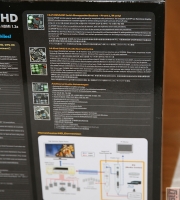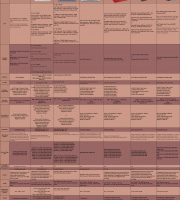


During a troll around the internet, at a typically late hour on an tranquil evening approaching January’s frosty departure, I had the misfortune to tread in a rather troubling tale of graphical discord. Most would declare it nothing more than a particularly wet wave of liquid news, though I call it a tale with intent to paint an appropriately portentous backdrop.
The story in question was broken to me in the form of a Podcast, authored by the venerable and voracious technophiles at PC Perspective. Being a frequent frequenter of their Youtube channel, I had casually dropped by to digest my weekly feed. Following a brief browse of their non-fiction section, my hungry eyes wandered over the words…
“Nvidia GTX 970 3.5gb Memory Issue explained”
They then proceeded to roll upwards, giving me a fleeting glimpse of unkempt eyebrow followed by a wash of royal maroon peppered with pulsating orange hoops. A life-altering spiritual experience? A severe psychedelic episode? Neither. Merely ephemeral ocular echoes of my studio’s spot lights (Gu10 LED’s) waltzing to a silent Danube as distant corners of consciousness grudgingly comprehended the terrifying truth.
The attributed video was under twenty minutes, not an epic, but comfortably long enough to snatch confusion from the jaws of simplicity. Having made impatient assumptions based on the headline, I anticipated the content would commence with an obsessive but legitimate consumer complaint, subtly segue into an artful official explanation and conclude with an elegant political balancing act from atop a proverbial picket fence of grass green and ruby red.
One cursory click followed by 936 spellbinding seconds, and my prophecy had come to pass. All that remained was to determine how to be sufficiently convoluted in my summary of such statistically fortified, fact-enriched and judiciously informative IT journalism.
Upon beginning the sixth paragraph of what only the definitively patient were presently engaged in assimilating, I sensed my mission to obfuscate had already been accomplished and that their sanity henceforth depended on divine lucidity.
Thus, let us presently reveal in the briefest most rewarding fashion who and what has warranted a certain Emerald Giant’s artfully engineered explanation.
Once upon a PCB, there were two top tier GPUs, 980 and 970, the Maxwell twins. Separated at birth, named with their respective numbers, cloned, branded, marketed and finally, sold in vast volumes to frame driven elitists.
Some recruited the broader brother to promote their perpetual pursuit of peerless pixel virtuosity while others with less cash, or a reduced need for benchmark bedazzlement, opted for the slighter sibling…though not so slight as to be mocked or ridiculed.
Turning to the tedious basics. On September 19th, 2014, the day of launch, Nvidia had solemnly sworn, via various methods of statistical divulgence, that both of these marvellous Maxwells fostered four gigabytes of video RAM, 64 reverential ROPs and 2mb of Level 2 Cache, equalling the quotas flaunted by their crimson nemeses, The R9 290 and R9 290X.
Six months later, in the more immediate past, a thread initiated by a seemingly misinformed customer took firm root on Nvidia’s forum and began to feverishly flourish with the numerous and supportive findings of forensically observant enthusiasts, all of whom had adopted 970s.
They were dismayed to discover detrimental performance anomalies during particularly intensive workloads and their grievances revolved around two principal issues.
1: The 970 was not consistently assigning its complete apportionment of memory, even when applications were exceeding the limits of their allotted resources. Under such circumstances, notably in Shadow of Mordore, RAM usage would appear to top out at 3.5GB, leaving 0.5GB unpopulated. When subjected to identical conditions, a 980 would nonchalantly transcend this mysterious perimeter and allocate all four gigabytes to the game or benchmark that required it.
2. On the exceedingly rare occasions that the 970 made use of its extremities, it would only do so at a dramatically diminished speed, supposedly transforming a silky, stimulating creature-slaying spree into an shockingly sporadic saga of choppy discontent. In other words, the net effect on frame rates and playability was less than acceptable.
A special utility, compiled by German CUDA programmer “Nai” was used by owners of either or both cards to incrementally determine the RAM’s optimal bandwidth by dividing it into segments of 128mb and assessing each individually. The results appeared to coincide with the experiences encountered in games as the 970’s upper memory blocks were occupied and thus, served as convincing evidence in support of the original claim.
Initially, there were some suggestions that the applications themselves were ill-equipped to exploit their full complement of provisions and elected to substitute slower system RAM for video RAM they were unable to detect. Even Nai himself asserted his program had been coded in great haste and was not designed to stress or analyze video RAM in the precise fashion that many impulsive reviewers had presumed. A revised version was promptly completed and exhibited exactly the same behaviour
By now, numerous inflammatory posts had permeated almost every forum actively engaged in debating the laws of luxury computing, and Nvidia decided it was time to publish a comprehensive and placatory response.
The unabridged version was hideously detailed, so here is a compacted and jocular paraphrase slavishly composed from what I was able to glean from green pastures.